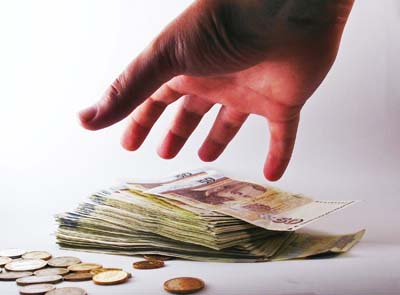Since 2009, National Treasury has embarked on fiscal expansion to enhance the public sector’s infrastructure programme and support future economic capacity in South Africa.
However, anaemic global economic growth over the last nine years has left the Treasury’s countercyclical expenditure programme unable to lift the GDP growth above 2% per annum.
Muziwethu Mathema, senior economist at KPMG in South Africa, offers his predictions on what taxpayers can expect on Wednesday.
A combination of slow growth and lower tax buoyancy have reduced the in-year 2016/17 revenue estimate by R23-billion. Without policy adjustments, gross tax revenue will – this financial year – fall short of Budget 2016 estimates by R36-billion for 2017/18 and R52-billion for 2018/19.
These budget deficits are leaving South Africa’s sovereign rating on the brink of being downgraded to non-investment grade.
In order to mitigate against this revenue shortfall, Minister of Finance, Pravin Gordhan, announced in his 2016 Medium-term Budget Policy Statement (MTBPS) that an additional R13-billion for 2017/18 and an additional R43-billion over the Medium Term Expenditure Framework (MTEF) will have to be sourced through various tax increases.
In this article, we explore the Minister’s possible tax options to raise the required tax revenue and close the revenue shortfall.
Personal Income Tax (PIT)
Revenue potential: R7,5-billion – R10-billion
PIT accounts for at least 35% of tax revenue. It is largest source of tax revenue and the most buoyant since 2010. This is due to higher-than-inflation wage increases, tax increases and reduced tax relief. South Africa has a progressive tax system, which means higher income individuals pay a higher proportion of tax. Consequentially, this means if Minister Gordhan were to generate significantly higher revenue, he would have to increase taxes for higher income earners.
One option to raise additional revenue is to introduce a 45% marginal tax rate for individuals earning above R1,5-million per annum. Based on preliminary calculations, Treasury can realise between R7,5-billion and R10-billion using this option. However, high income individuals are often skilled and mobile. A punitive tax rate might encourage aggressive tax planning or incentivise them to relocate to countries with lower tax rates.
Corporate Income Tax (CIT)
Revenue potential: R0.0
In the current weak macro-economic environment, Treasury is unlikely to increase CIT, as this could result in base erosion, capital flight and hence generate little revenue. Furthermore, increasing the CIT rate will be uncompetitive. South Africa’s current statutory tax rate is already higher than most tax jurisdictions.
However, there is room for Treasury to lower the tax rate to attract investment and send a business friendly signal.
Value-added Tax (VAT)
Revenue potential: R0.0 – R15-billion
South Africa’s VAT rate is relatively low compared to most tax jurisdictions and there is less risk of tax avoidance and tax planning associated with this tax.
Preliminary calculations by KPMG suggest that a 1 percentage point increase in VAT could yield approximately R15-billion in additional revenue. However, the Davies Tax Commission First Interim report on VAT highlighted that an increase in VAT will have a negative impact on inequality, real GDP growth and inflation.
Furthermore, VAT increases will be disliked by labour unions. Despite a high revenue yield these factors make a VAT increase highly unlikely.
Specific Excise Tax
Revenue potential: R 5-billion – R7-billion
Treasury is likely to realise additional revenue through higher-than-inflation adjustments in sin taxes, particularly in luxury products like cigars, spirits and wines. In Budget 2016, this raised an additional R2,3-billion. However, disproportionate increases in specific excise taxes might encourage black market consumption.
Furthermore, a new specific excise duty on sugar-sweetened beverages (SSBs) was announced in 2016 and could generate approximately R2,5-billion to R4-billion. However, this tax will be introduced at a higher effective tax rate than most other countries that have a comparable tax and is set at higher rates than most wines and spirits in South Africa. Furthermore, any job losses and impact on industry growth will have negative second round effects for the PIT and CIT tax bases.
Fuel levy
Revenue potential: R5-billion – R7-billion
Treasury is also likely to increase the fuel levy. However, with higher crude oil prices the Minister will not have the same space to increase fuel levy compared to the last two budget periods, where he raised R6,6-billion and R6,8 -illion, respectively.
Other adjustments
Additionally, the Minister has the option of progressively providing reduced tax relief to raise short-term revenue. In Budget 2016, Treasury raised R7,6-billion through this option. However, failure to give tax relief over a sustained period is regressive, as lower income groups are disproportionately hurt by an increased tax burden. We also expect the Minister to announce other progressive adjustments to wealth-related taxes, similar to last year’s changes to property taxes.
Conclusion
While it is impossible to predict the exact adjustments the Minister will announce, above we outline several possible tax adjustments to raise the required revenue. We expect a combination of these tax measures to raise at least R13-billion in the 2017/18 fiscal year.

